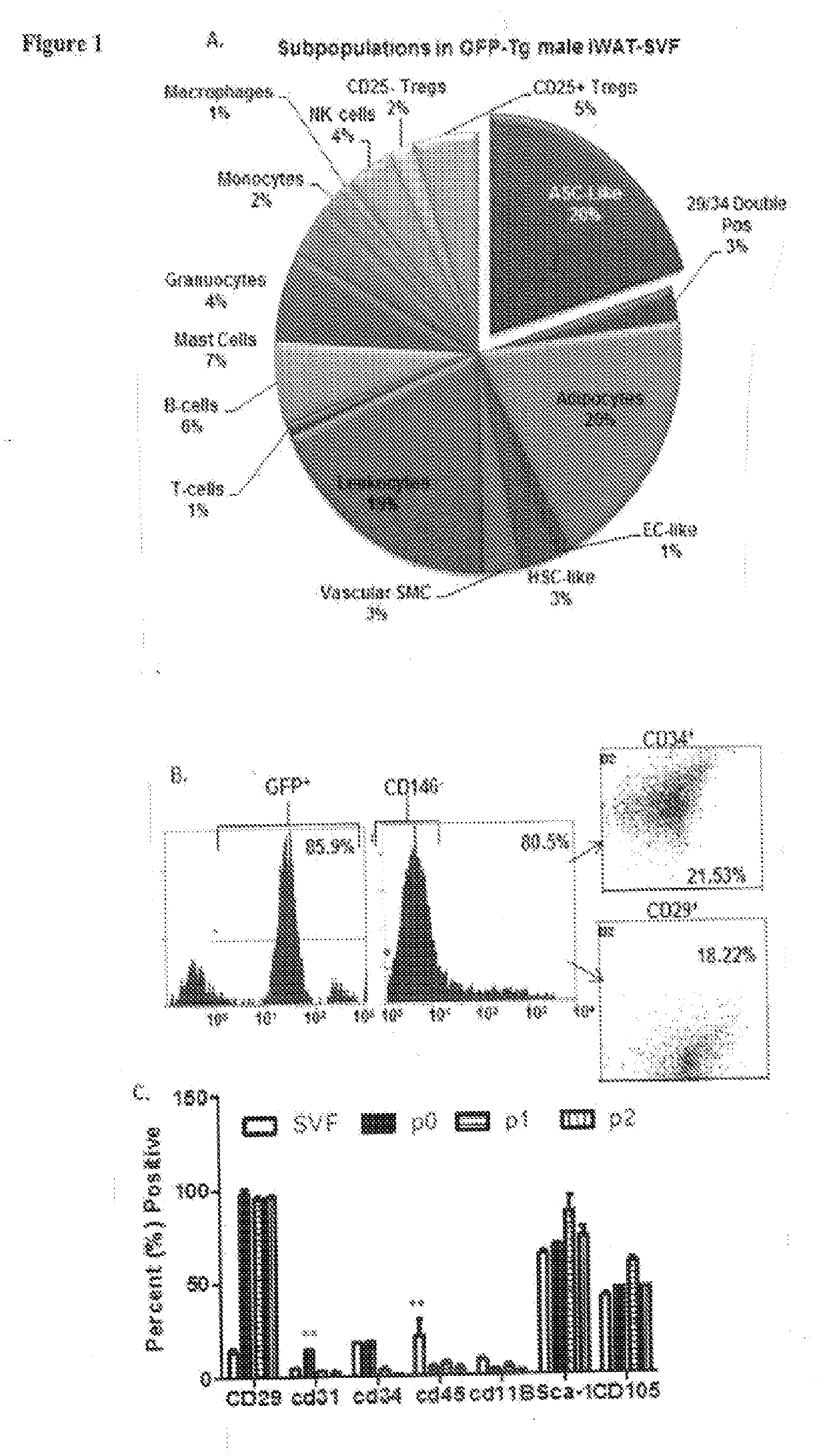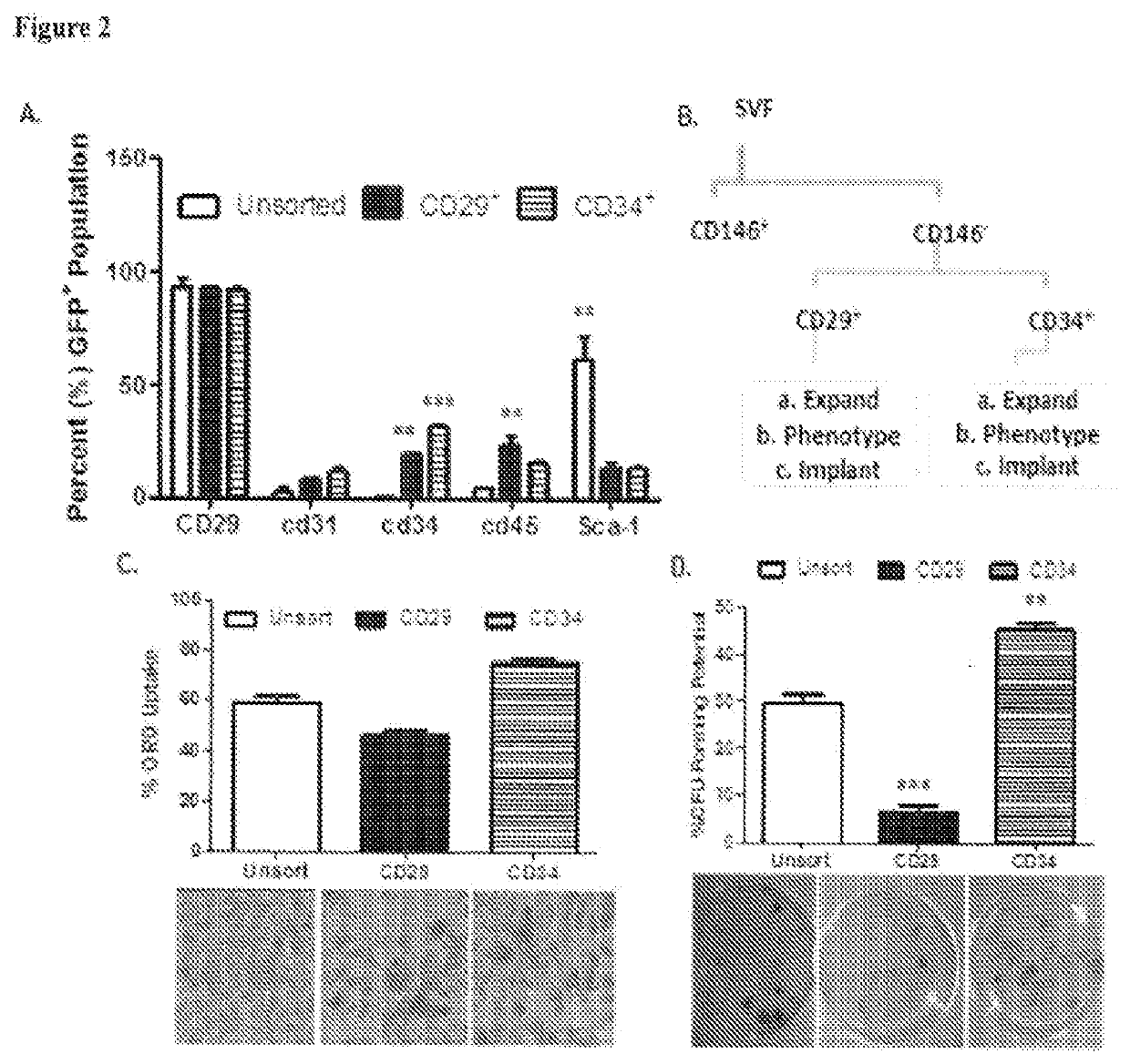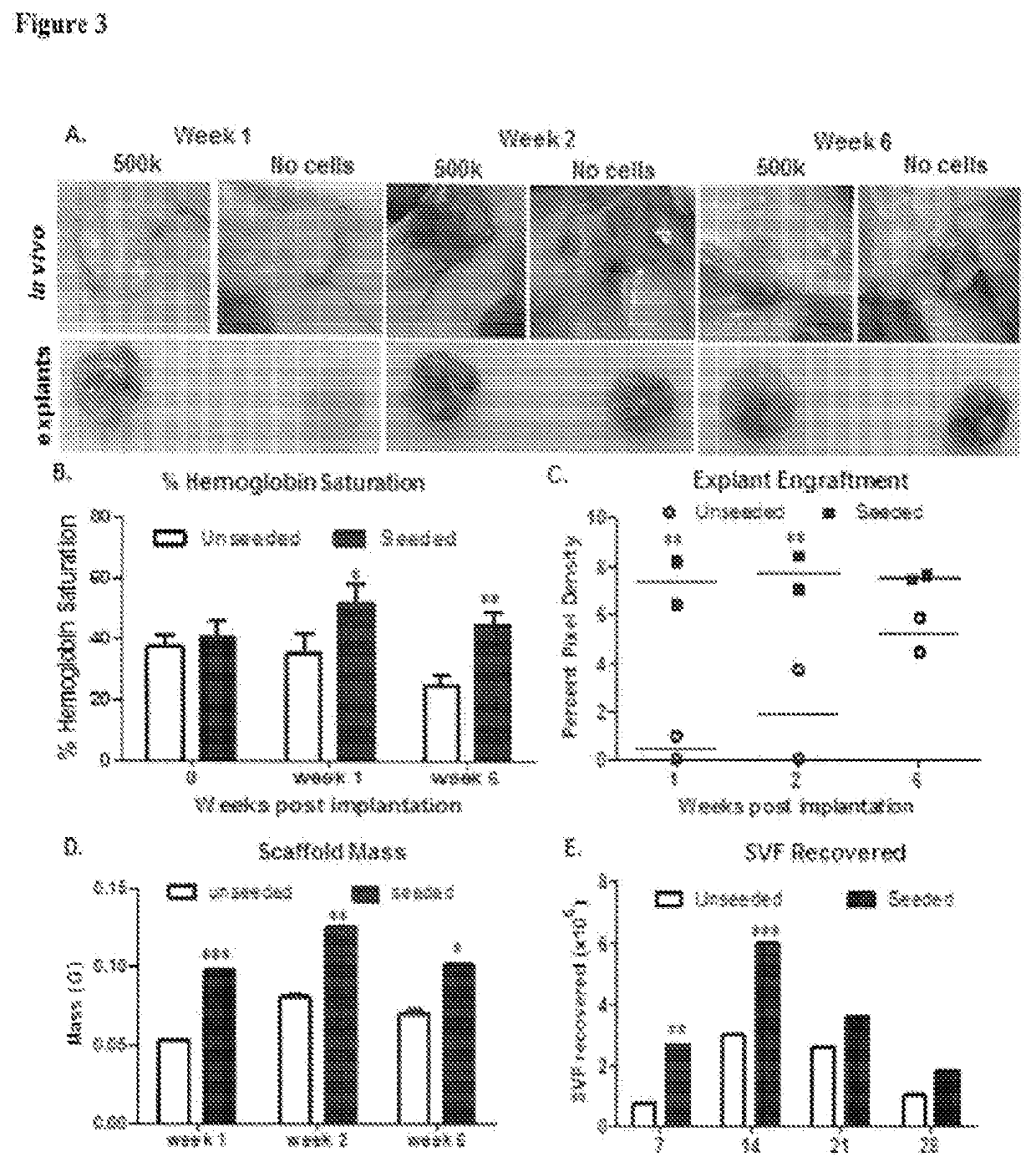Biological Scaffolds, Products Containing Biological Scaffolds and Methods of Using the Same
a technology of biological scaffolds and biological scaffolds, applied in the field of new materials, can solve the problems of not being able to create the classic unilocular or “signal ring” and the limitations of the standard 2d culture model, and achieve the effect of maintaining the macroscopic and cellular structure and function of the scaffold
- Summary
- Abstract
- Description
- Claims
- Application Information
AI Technical Summary
Benefits of technology
Problems solved by technology
Method used
Image
Examples
example 1
on of Components of a Biological Scaffold
[0089]Isolation of Bone Marrow Mesenchymal Stem Cells (BM-MSC)
[0090]To isolate BM-MSC, first obtain bone marrow aspirate that has been anti-coagulated with heparin or citrate to prevent clotting. Maintain the bone marrow aspirate on wet ice at 4° C. prior to use and perform all steps with open containers within a BSL2 biological safety cabinet. Thoroughly mix Ficoll Paque solution (GE Healthcare™ Ficoll-Paque™ PREMIUM, 1.078 g / mL). Aliquot 20 ml of Ficoll Paque solution to a sterile 50 ml conical tube. Gently layer 10 ml of bone marrow aspirate onto the top of the Ficoll Paque layer and avoid any mixing. After sealing the tube, centrifuge for 30 minutes at 500×g at room temperature without any braking using a benchtop Sorvall™ Legend™ centrifuge. After returning the conical tube to the BSL2 biological safety cabinet, aspirate off the upper clear plasma layer and aliquot to a fresh sterile 50 ml conical tube. Next, aspirate the buffy coat laye...
example 2
of Stromal Vascular Fraction (SVF) Cells and Adipose-Derived Stromal / Stem Cells (ASC)
[0095]To isolate SVF cells, first obtain a volume of at least 100 ml of lipoaspirate or 50 grams of subcutaneous adipose tissue from patients undergoing elective liposuction or abdominoplasty. The tissue can be stored at room temperature for up to 24 hours after the surgical procedure to allow for shipping or transit to the laboratory. Transfer the tissue upon receipt to the laboratory into a sterile BSL2 biological safety cabinet. If the tissue is received intact (after abdominoplasty), mince the tissue thoroughly into fragments of 2 to 3 mm3 using either two scalpels or two pairs of fine scissors that have been sterilized or autoclaved prior to use. After mincing the tissue or aliquoting the lipoaspirate, transfer the 100 ml volume of tissue to a sterile 250 ml capped Nalgene™ plastic centrifuge tube. Add an equal volume of sterile PBS and allow the tissue and liquid phases to separate over a 2 to...
example 3
tal for Human Platelet Lysates (hPL) Gel Preparation
[0166]When hPL and DMEM F12 combine, and are warmed to 37° C., the product is a thermos-responsive bioscaffold that is conducive to extended (1-2 month) 3-D culture and / or in vivo implantation via subcutaneous injections.
[0167]Methods
[0168]Preparation of hPL
[0169]Perform all steps within a biological safety cabinet unless otherwise indicated. Obtain desired amount concentrated expired human platelets in 15 mL or 50 mL conical tube. If not using immediately for 3-D cell culture, store at −20° C. before lysate preparation by three freeze / thawing cycles. Perform 3 freeze / thaw cycles to lyse platelets by osmosis. This will release maximum yield of growth factors for cell cultures. Centrifuge 8,000×g for 20 mins. Remove the solid (white) top layer of human platelets by aspiration.
[0170]hPL Supplemented Media Preparation
[0171]Prepare hPL supplemented media by adding 7.5% (v / v) hPL to 1% antibiotic / antimycotic and 91.5% Dulbecco's Modifie...
PUM
| Property | Measurement | Unit |
|---|---|---|
| temperature | aaaaa | aaaaa |
| v/v | aaaaa | aaaaa |
| v/v | aaaaa | aaaaa |
Abstract
Description
Claims
Application Information
 Login to View More
Login to View More - R&D
- Intellectual Property
- Life Sciences
- Materials
- Tech Scout
- Unparalleled Data Quality
- Higher Quality Content
- 60% Fewer Hallucinations
Browse by: Latest US Patents, China's latest patents, Technical Efficacy Thesaurus, Application Domain, Technology Topic, Popular Technical Reports.
© 2025 PatSnap. All rights reserved.Legal|Privacy policy|Modern Slavery Act Transparency Statement|Sitemap|About US| Contact US: help@patsnap.com



